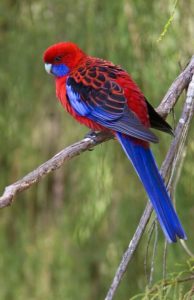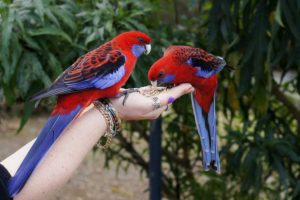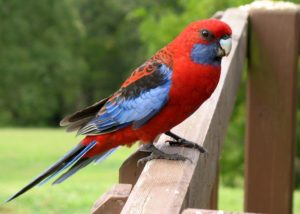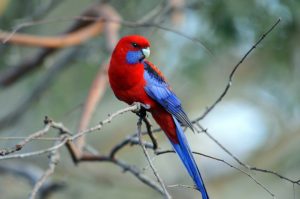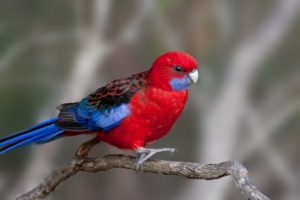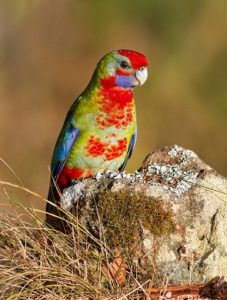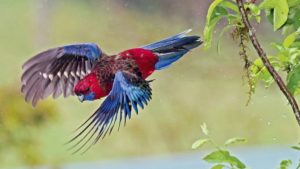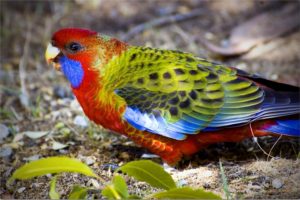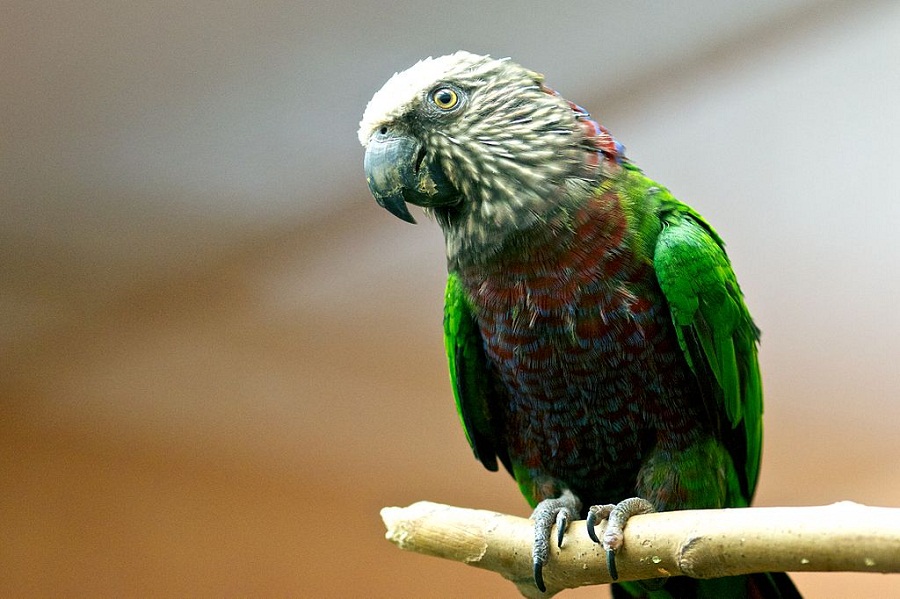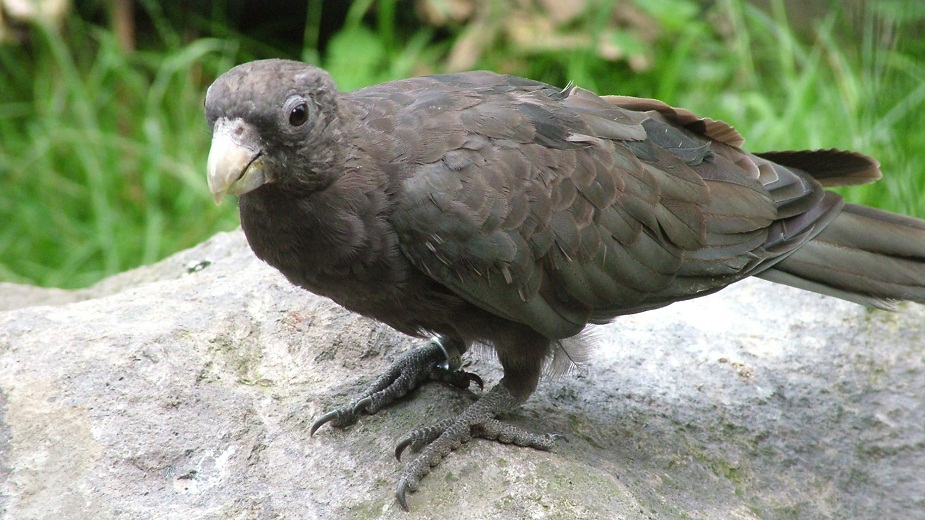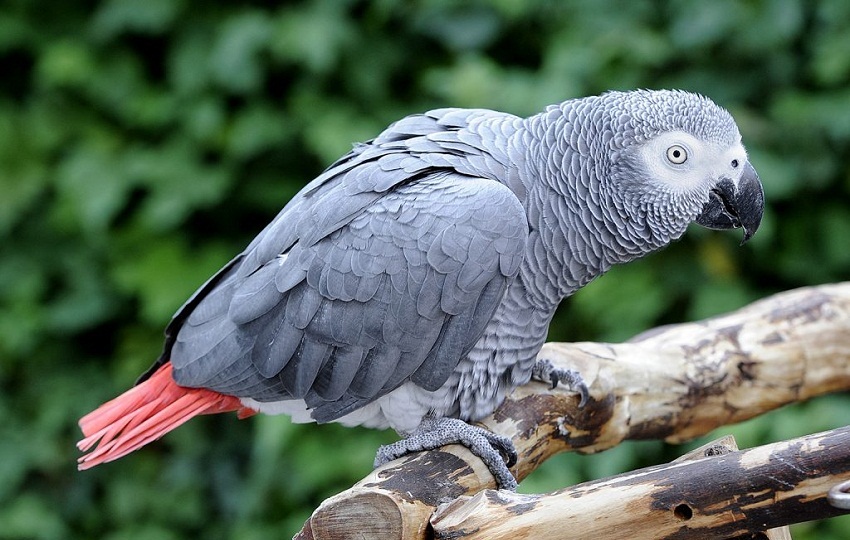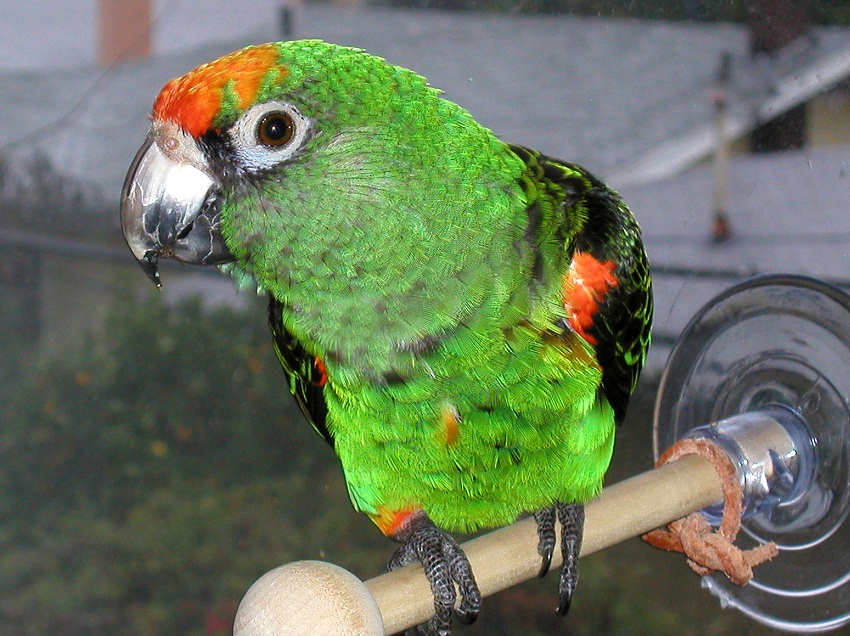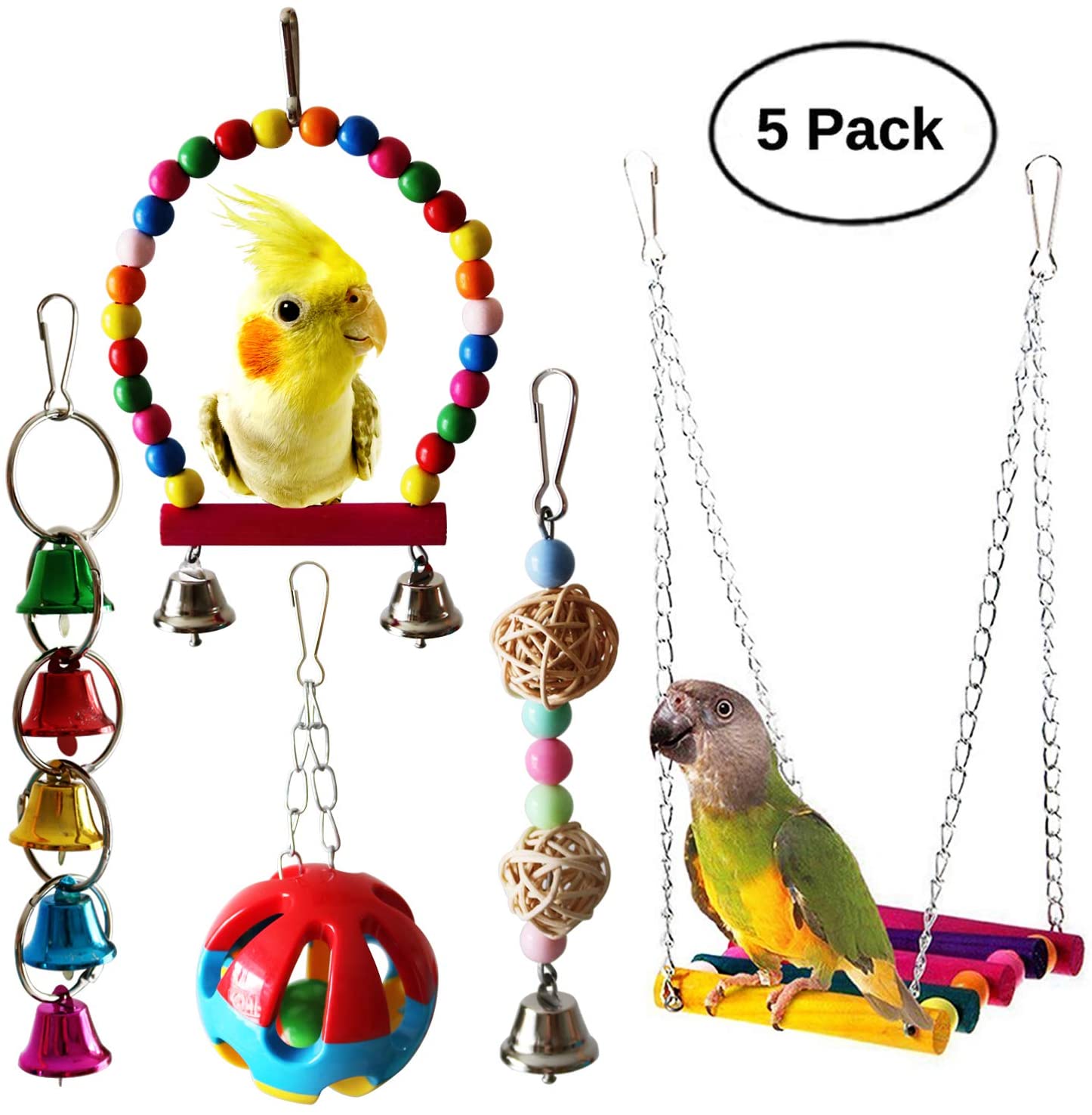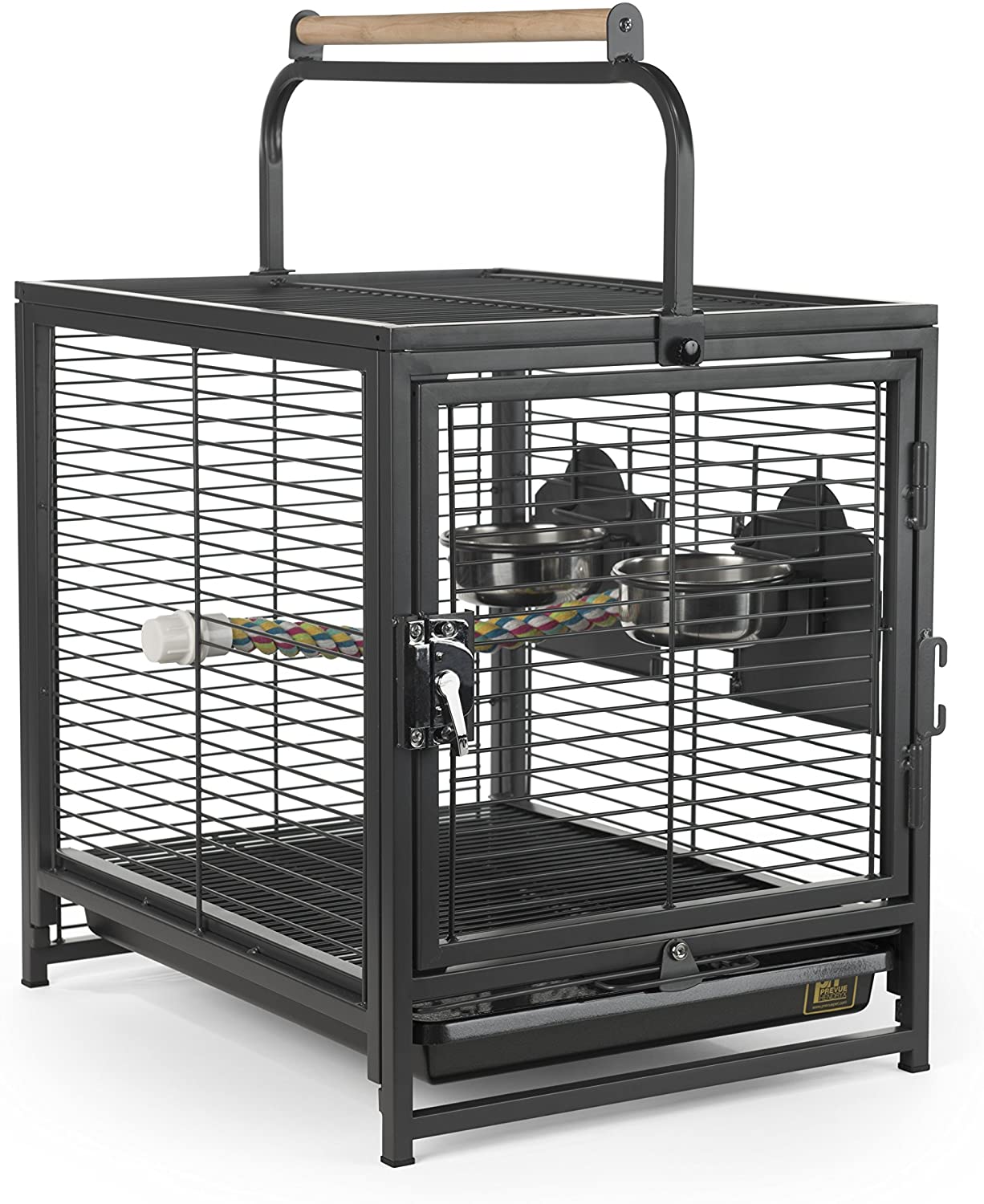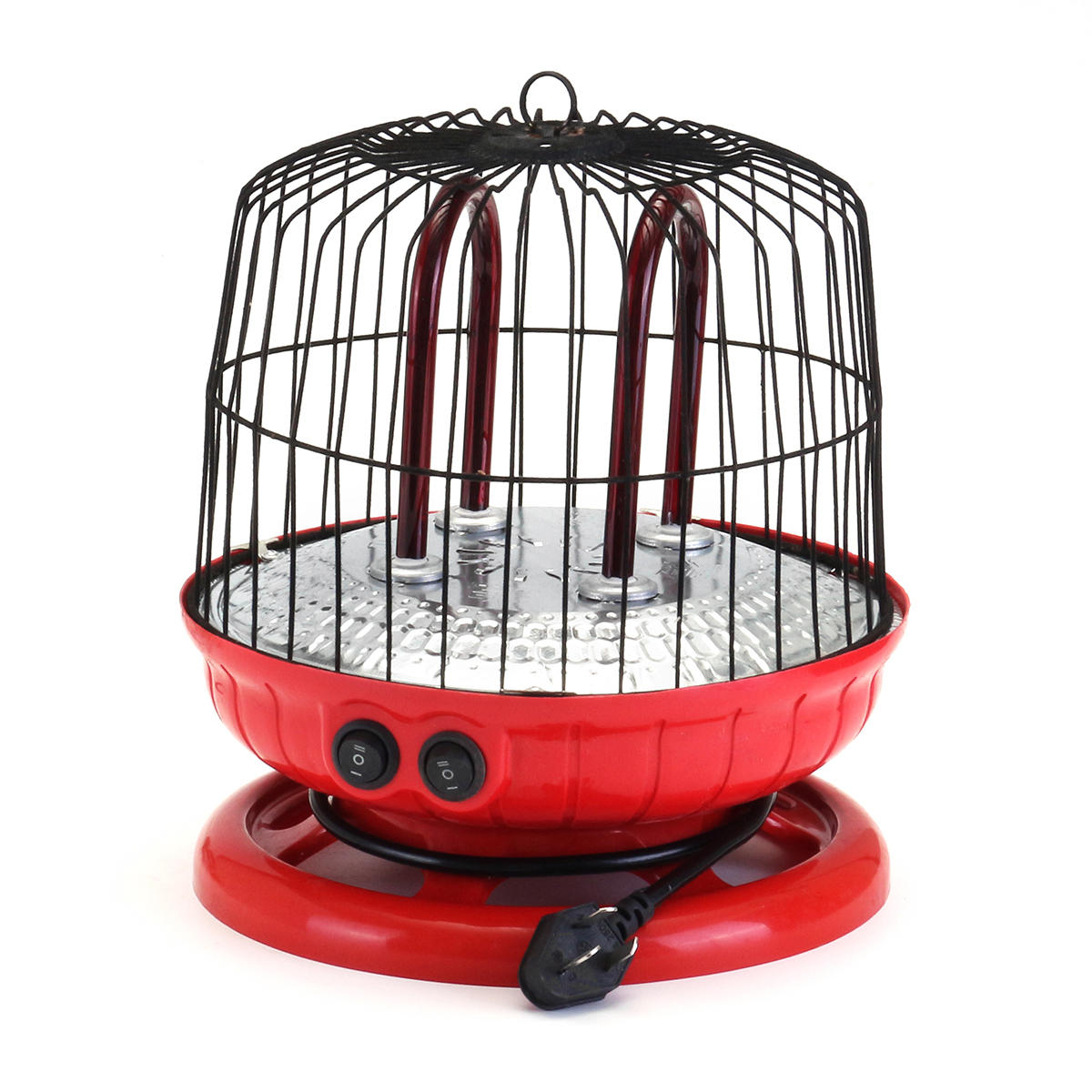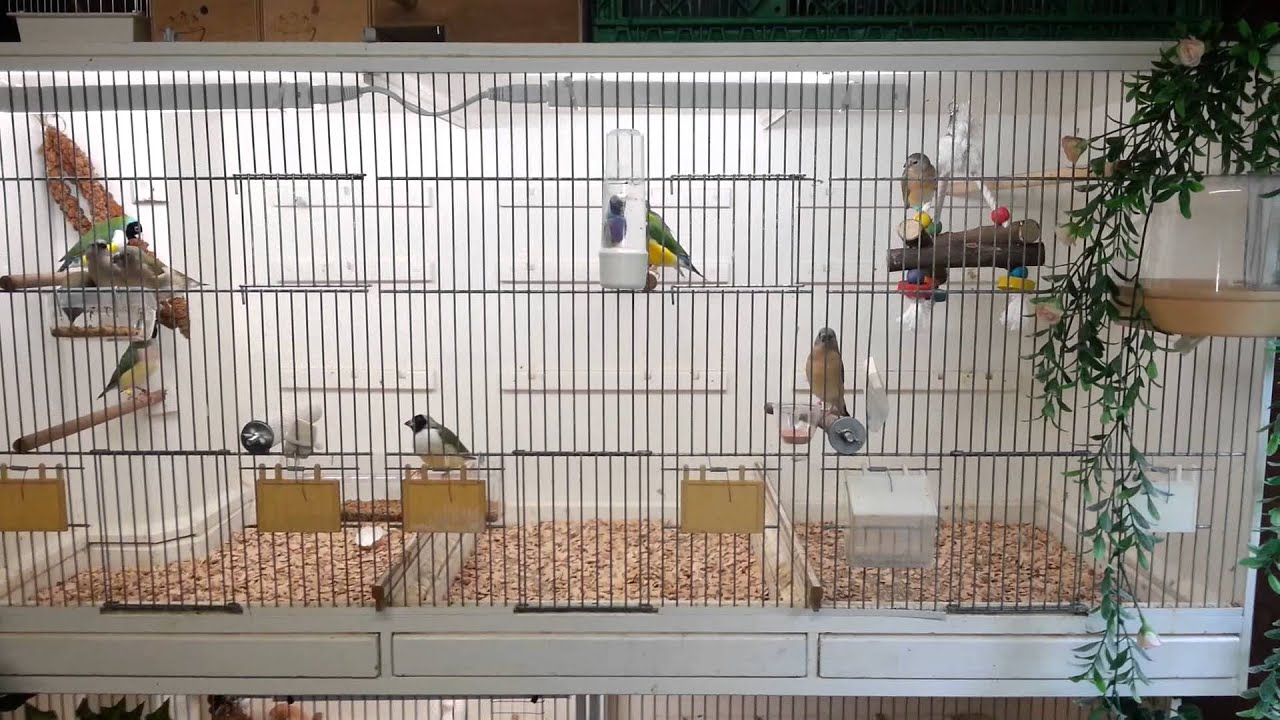As the name suggests, crimson rosellas are red parrots having conspicuous patches of blue and black on their bodies. These native Australian birds are commonly found in New Zealand and Norfolk Island.
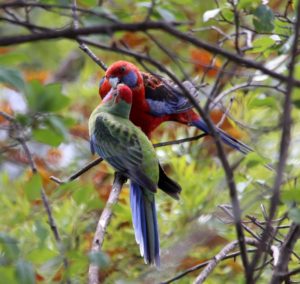
Crimson Rosella Pair
Scientific Classification |
|
| Kingdom | Animalia |
| Phylum | Chordata |
| Class | Aves |
| Order | Psittaciformes |
| Superfamily | Psittacoidea |
| Family | Psittaculidae |
| Subfamily | Platycercinae |
| Tribe | Platycercini |
| Genus | Platycercus |
| Scientific Name | P. elegans |
Quick Information |
|
| Other names | Pennant’s Rosella, Red Lowry, Mountain Lowry, Crimson Parrot |
| Size | 10.4-14 in(26.4-35.5 cm) |
| Wingspan | 6.5-7.5 in(16.51-19.05 cm) |
| Weight | 115-170 gm |
| Color | Male: Bright red plumage with royal blue patches on wings and face,deep blue chin and cheeks, grayish white hooked bill, dark brown eyes, black rump, upperparts and scapulars with red edges, blackish blue flight feathers, blue-gray undertail feathers, deep blue coverts of underwings with black flight feathers, blue tail feathers. Gray feet.
Female: Same coloration as males with a bright greenish patch near the middle of tail feathers. Baby: Olive plumage sometimes with tinges of red. |
| Subspecies | P. elegans elegans
P. elegans nigrescens P. elegans melanoptera P. elegans flaveolus |
| Distribution | Eastern New South Wales and Victora, Queensland’s northeastern coast, Kangaroo Island, On the banks of Murray River and its tributaries |
| Habitat | All sorts of forests, woodlands, farmlands, gardens, and parks. |
| Sounds and calls | Noisy except the feeding time, high-pitched “pi-pi-pi-pi-pi” or soft twittering while roosting, “kwik kwik” sound is heard while flying and they emit a piercing metallic sound “chinka-chink” when alarmed. |
| Clutch | 3-8 eggs |
| Incubation | 16-28 days |
| Fledging | 5 weeks |
| Breeding age | Males: 2-3 years Females: Around 18 months |
| Breeding season | September to February |
| Lifespan | Around 20 years (in captivity) |
| Diet | Fruits, grass seeds, flower buds, and insects. |
| IUCN Conservation Status | Least Concern |
Mutations
- Blue
- White
- Yellow
- Cinnamon
- Orange-red and yellow
- Silver
As pets
These medium sized noisy birds need to be well tamed to be kept as a pet. So, if you have time and patience, you can certainly adopt one as it will not disappoint you with its jovial characteristic and colorful appearance.
Housing
A large acrylic cage is good for crimson rosellas as they need a lot of space to thrive well. Chewable wooden toys, willow, pine and elder branches along with mesh should be provided inside the cage for these strong chewers.
Temperature
They are not susceptible to weather change, but still, it is better to keep them at a moderate room temperature.
Behavior
Crimson rosellas, unlike other parrots, do not like cuddles and get bored if they sit idle for a long time. They also enjoy sitting on their owner’s shoulder. Although not great talkers, still they can imitate some words vaguely.
Diet
Daily intake of fruits, vegetables, sprouted seeds, millet mixture can keep your pet healthy. You may also give it treats like boiled eggs, canary seeds, and any other fresh foods.
Care
Spend quality time with your rosella and make it socialize with other members of your family to curb its biting tendency.
Splash its feather with fresh water once or twice a week to keep its plumage clean. Disinfect its cage along with food and water bowls.
Health problems
These strong birds rarely get affected by illness, but when they do, it is mostly because of intestinal worm infection, fungal infection or beak and feather disease. A proper check up by a vet is required if such situation arises.
Price
It is available within a range of $ 170-$295.
Interesting facts
- Its French name “Perruche de Pennant” has been given after the famous Welsh naturalist, Thomas Pennant.
- Adelaide Rosella, once considered as a different species, is now proven to be a cross between the crimson rosella and its subspecies the yellow rosella.
Video: Talking crimson rosella
References



